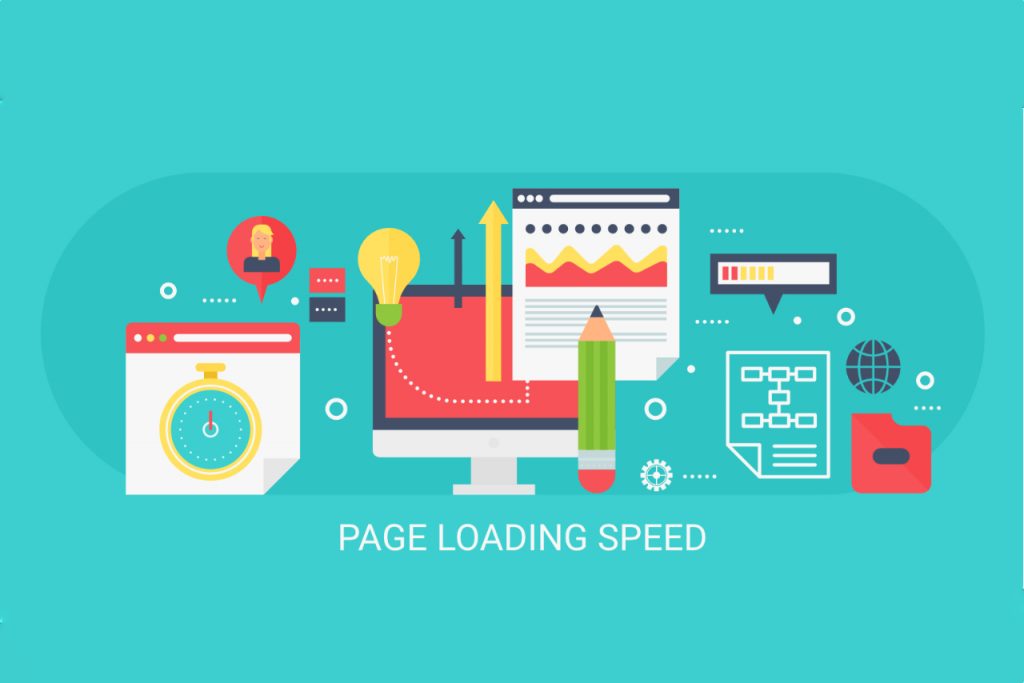Have you ever been to a blog that took lots of time to load? At least will you try to revisit it the next time you see? Well, nothing will kill the engagement of your blog visitor like a very long page load time. Does your blog encounter such an issue? Do you wish your blog must load at a jet speed? Then, this article will let you know how to speed up a website and make it fast loading. Resolve your website speed issues with these quick tips!
Why Web Page Loading Speed Matter?
Statistics says-
An average Smartphone user will leave the page if it does not load for 3 seconds or more! Google has already started considering the speed as a ranking factor in its search algorithm!! Almost 75% of internet users say they will not revisit a website if it takes more than 4 seconds to load!!!
First, let’s find out how quickly your blog is loading. To check the accurate page loading time of your blog, you can use Google PageSpeed Insights. It provides quick insights about your page than any other tool. Just enter your blog’s URL and hit “Analyze”. Now you got to know what are the issues you found in your blog that hurting its speed?
How to Make Your Website Load Faster?
Name 3 ways to decrease page load (perceived or actual load time). No, I am here telling the top five ways- Let’s get deep into the insights on how to improve website loading speed:
1. Resize and optimize Images
It might be the easiest way to reduce the size of your web pages and load times! Sometimes when you use larger images than that will appear on your web page, it means you are wasting the memory. To resize your images exactly how it wants to fit on your blog. There are some tools like TinyPNG, Smush.it, which can help you in reduces the file size further.
2. Trimming CSS, JavaScript and HTML codes
When you think to trim CSS, JavaScript, HTML codes, it means you are removing all the gaps (white spaces) between the characters. It’s a sort of compressing the coding before it is being sent to your blog audience. There are a few tools to help you in doing this, W3 Total Cache, CSS Compressor, etc.
3. Leveraging browser cache
Sometimes your blog contains things that don’t often change like images, JavaScript, CSS files, etc. You can increase the speed of your page by instructing the browser to cache a copy of the above data on their hard drive. When next time the user visits your blog, these things will not be downloaded again and hence increasing your page load time.
4. Reduce HTTP Requests
When someone clicks on your title tag from a search and goes to your page, the site begins making HTTP requests to fill in the different regions of your site’s page. A side’s speed issues might be that there are too many images, style-sheets, or scripts running. Be careful loading your site up too many ads, pop-up email prompts, or sidebar widgets as each will place greater stress on the site’s ability to load quickly. To see if your HTTP requests are within reason, you can dive into your developer tools and inspect your network. This page should explain which files on your page are taking the longest to load, so you can resolve only the files that are causing issues.
5. Ensure plugins are up-to-date
Some blogging applications, widgets, templates, or themes are needed to be upgraded to reduce security threats. It can also impact your blog’s loading time. Make sure to regularly check for updates and work on it to make your blog fresh and upgraded to new technologies.
6. Move to the fastest server
Only if your web server is fast, your blog will load as fast as possible! Ensure your blog has a higher server response, meaning your loading speed will be optimal. Having a better server hosting provider can make this ultimate possible. A hosting option can mean all the difference for a site’s success. There are three general options for hosting: shared, VPS, and dedicated. The cheapest option shared hosting, will almost always guarantee a slow site. A few dollars more, you can get you a VPS or Dedicated server, which would allow you to have either sole access to or at least priority access to necessary server resources.
7. Get Rid of the Unnecessary
Many people who are just starting a website will happily try to make the site have as many functions as possible. Perhaps their blog turned into a side business, and their running sales along with their blog. But, as part of their social media management and branding, they have constant up-to-date feeds from their Twitter, YouTube, or even Twitch accounts. The fact of the matter is your website needs to offer information and a stage for transactions, and that’s it. If someone wants to read your twitter feed, they can head over to Twitter. If someone wants to watch your tutorial, then they can watch it on YouTube. The extra “stuff” is slowing down your website and driving away traffic.
8. Use Hyperlinks with Purpose
SEO consulting services support the inclusion of outwardly bound links in any post. But, putting in links for the sake of it will eventually damage your website. Additionally, embedding media will slow down your site.
